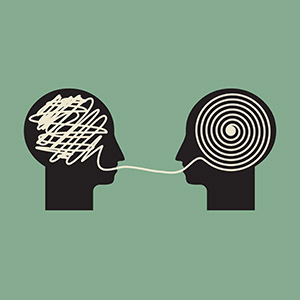Plain Language Advisory Group
January 12, 2021

|
AUCD is committed to being an accessible organization and making sure that everyone knows what is being talked about, either by speaking or writing so all people can be included. As part of this, AUCD created the Language and Communications Access plan. This plan outlines steps to further AUCD's language accessibility.
In 2020, to take steps in implementing this plan, the UCEDD Resource Center created a Plain Language Advisory Group. This group was made of network members and other disability leaders who had experience making Plain Language materials and who were interested in making more materials available in Plain Language.
This advisory group helped the UCEDD Resource Center think about plain language: What is plain language? Why is it important? How can we make the materials of the UCEDD Resource Center accessible so everyone can use them?
We want to share some things we learned about plain language. This group continues to meet ongoing to promote plain language across the AUCD network.
We know that:
- Disability organizations use lots of academic language and jargon. Jargon is language that is specific to a particular field or job.
- Academic language and jargon makes it hard for people to participate, because not everyone can understand or feel like they belong.
The Plain Language Advisory Group didn't always agree on what plain language is. There are lots of names used to talk about plain language, like easy-read, accessible, or clear. Plain language materials can also come in a lot of different formats, both written and spoken. We know that many people with intellectual disabilities can't read, so we need to consider other formats for sharing information, so everyone is included. Tuesdays with Liz is a good example of plain language in spoken formats.
Plain language is for everyone, not just people with disabilities. Some benefits of plain language include:
- Everyone can use information easier and more quickly.
- It gives the reader power to find information.
- It is easier to translate documents into another language.
Lessons learned so far:
- Writing in plain language takes time.
- Often, we don't have enough time. However, it's necessary to use plain language in order to include everyone in the conversation.
- We need to plan ahead so we have enough time.
- We need make a plan to include plain language from the start.
- If things are clear at the beginning, you don't need to spend a lot of time explaining. Everyone can understand from the start.
- Plain language is a skill you can learn, if you take the time.
- People need tools and guidance on how to use plain language.
- People need to practice using plain language.
- Plain language materials should always be reviewed by people with intellectual disabilities.
The Plain Language Advisory group is still figuring this all out. We don't have all the answers, but we hope to continue this conversation with the AUCD network at future AUCD events. We will be posting our new Plain Language resources to the UCEDD Resource Center's website soon.
If you're interested in learning more or joining this Plain Language group, please contact Katie Johnson ([email protected]) or Liz Weintraub ([email protected]).
Image description: Icon of two silhouettes talking to each other. The first face has a messy swirled line in its brain. The line connects to the other head where it is a neat, swirl. Image represents communicating confusing information in a way that makes it clear.







